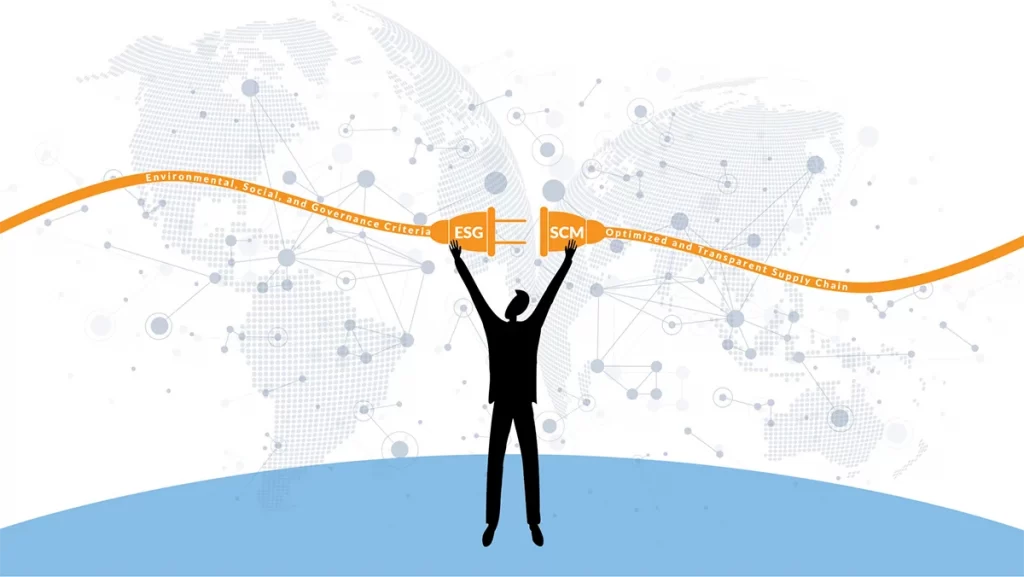
ESG (Environmental, Social, Governance) is a complex, global force driving your business, no matter the market or region. It is increasingly influencing consumer demand and access to capital, two vital elements of sustainable business growth. A recent Forbes article unpacks ESG criteria in a level of detail we won’t tackle here. If you are unfamiliar with the topic, it is a great place to start. To boil it down, the influence and permeation of ESG is already global, increasing exponentially, becoming more formalized, and will be a decider in the long-term growth, success, and sustainability of your business. Climbing into the driver’s seat to manage the impact of ESG criteria on your organization, particularly in your supply chain, should be part of your business strategy and most likely already is. And thankfully, the goals of successful supply chain management: sustainability, reducing waste, and increasing efficiencies, align perfectly with some of the goals of ESG.
What Are Some Examples of Environmental, Social, Governance (ESG) Criteria?
Environmental factors, the “E” in ESG, include the contribution a company makes to climate change through emissions, waste management, product life cycle management, efficient energy use, and more. The reinvigorated efforts and heightened consumer activism to battle global warming, cut emissions, and reduce the carbon footprints of corporations are leading the charge.
The “S” or Social aspect of ESG includes human rights, labor standards in the supply chain, any exposure to illegal child labor, and everyday corporate issues such as company culture and workplace health and safety practices. A company’s “social score” can rise if it is well integrated with its local community and operating with a “social license” with consent.
The “G” in ESG pertains to the governance of corporations and refers to a set of rules or principles defining rights, responsibilities, and expectations between different stakeholders, including the board of directors, managers, shareholders, and stakeholders, in the governance of corporations. A well-defined corporate governance system can balance or align interests between stakeholders, can work as a tool to support a company’s long-term strategy, and allow investors to screen for appropriate governance practices in evaluating investment potential.
When Did ESG Criteria Really Take Hold?
Although the global impact of corporations on environmental and social issues has been under scrutiny for decades, 2006 was a turning point. That year, a United Nation’s Principles for Responsible Investment (PRI) report introduced ESG issues in international investment, marking their first use as a lens to focus on the sustainability of investment opportunities represented by global corporations and built on the UN’s Global Compact’s 10 Principles. At the time, 63 investment companies managing $6.5 trillion in assets signed on to incorporating ESG issues into investment evaluation.
In 2019, 2,450 signatories represented over $80 trillion in Assets Under Management (AUM) globally. Currently, there are no global standardized ranking or rating systems for corporate ESG adherence. Still, major investment advisory firms, asset management firms, financial institutions, and stock exchanges offer methods by which investors can evaluate ESG performance. Standard & Poor’s (S&P) has its own ESG rating system and produces reports on many sectors, including Agribusiness and Consumer products. ESG and the question of sustainability are also permeating ISO standards discussions.
What is Driving ESG?
As mentioned previously, consumer demand and access to capital are driving a move towards ESG compliance worldwide. No matter what product or geographic location, Millennials and Gen Z consumers are putting their dollars where their social awareness and activism lie more than generations before them. And they have the purchasing power to hold sway. As early as 2014, a Horizon Media study found that 81% of millennials expect companies to make public commitments to good corporate citizenship. According to the Nielsen Global Corporate Sustainability Report, 66% of consumers will pay more for products from brands committed to environmentally friendly practices. Young consumers are highly aware of a corporation’s environmental and social impact. They are increasingly active and adjusting their spending towards brands that align with their beliefs.
According to a recent article from SustainableBrands.com, accelerating demand for sustainable products and responsible corporate behavior are reshaping the Food and Beverage sector and the food packaging industry that supports it. Major brands have announced significant commitments to sustainability practices. Coca-Cola stated that by 2030 it would collect and recycle one bottle or can for each one it sells. McDonald’s announced a commitment to have 100% of its guest packaging made from renewable, recycled, or certified sources by 2025.
If you are a global market leader, ESG adherence is already a part of your holistic business strategy, no matter what the industry sector. If your business is a supplier to those global brands, your ESG compliance will undoubtedly come under scrutiny at some point. Any lack of willingness to adapt and improve your environmental impacts, such as packaging, plant emissions, water usage, or social issues such as labor practices and workforce management, could put you on the outside of opportunities for sustained growth. Ineffective or poorly executed ESG policies could impact access to capital and your attractiveness to potential M&A (Mergers & Acquisitions) opportunities.
3 Supply Chain Strategies to Improve ESG Compliance
1. Reduce Waste
Reducing waste should already be a significant part of managing your supply chain. This directive can also be a critical factor in determining your company’s and its product’s environmental impact. Reducing waste is not just about wasteful spending. For example, wastefulness in the Food and Beverage industry can be determined by your suppliers’ lack of sustainable land and water usage practices. In consumer goods, excessive packaging, or packaging too heavily reliant on environmentally unfriendly materials such as plastics, can impact ESG compliance and ultimately limit business growth and new opportunities.
Finding and building supplier relationships with businesses that understand and adhere to reducing waste in the environment is vital to ESG compliance, but it can begin in-house. In other words, practice what you preach. Set your waste-reduction targets and reduce your organization’s environmental footprint from the shop floor to the top floor. Leading by example will align your business with the suppliers you seek as long-term, ESG-compliant partners.
2. Increase Supplier Transparency
Part of optimizing your supply chain comes down to good supplier relationship management. And critical to those relationships is information sharing. In the case of ESG adherence, transparency in your supplier sourcing practices is required. Your supply chain partners are instrumental in delivering on your commitment to sustainable environmental, social, and governance practices. Suppose you do not know how they are managing their business in these critical ESG areas. In that case, it can come back to impact you in the short-term, lowering consumer demand, stock price, market capitalization, and long-term value and competitive advantage.
A recent example is global brands dealing with the human rights implications of their long supplier partnerships in China. Their supplier’s labor practices have gained intense, unfavorable international media attention, reflecting poorly on the brands and forcing them to release statements affirming their commitment to human rights abuses. Managing your commitment to good ESG practices means managing your suppliers in these critical areas and begins with transparency.
3. Change Supplier Partners
For suppliers that are unwilling or unable to take steps and begin managing ESG criteria, it may be time to look for new partnerships. This advice may seem harsh, but leaving even long-term supplier relationships in place with questionable ESG practices can harm your business in the short term and over the long haul. As any good supply chain manager knows, investigating new resources is part of optimizing and streamlining your supply chain regardless. Establishing Environmental, Social, and Governance (ESG) standards for your supplier partnerships is vital and can be part of any RFP or bidding process.
Supply chain systems are becoming increasingly complex, involving a global network of people, processes, resources, activities, ESG (Environmental, Social, Governance) criteria, and technologies. As the demand for better integration becomes more challenging, so does the opportunity for growth. One of our primary focus areas at POWERS is supply chain management. To schedule an initial discovery and analysis with our dedicated management consulting team, please call us at +1 678-971-4711, email us at info@thepowerscompany.com, or provide your contact information here.


